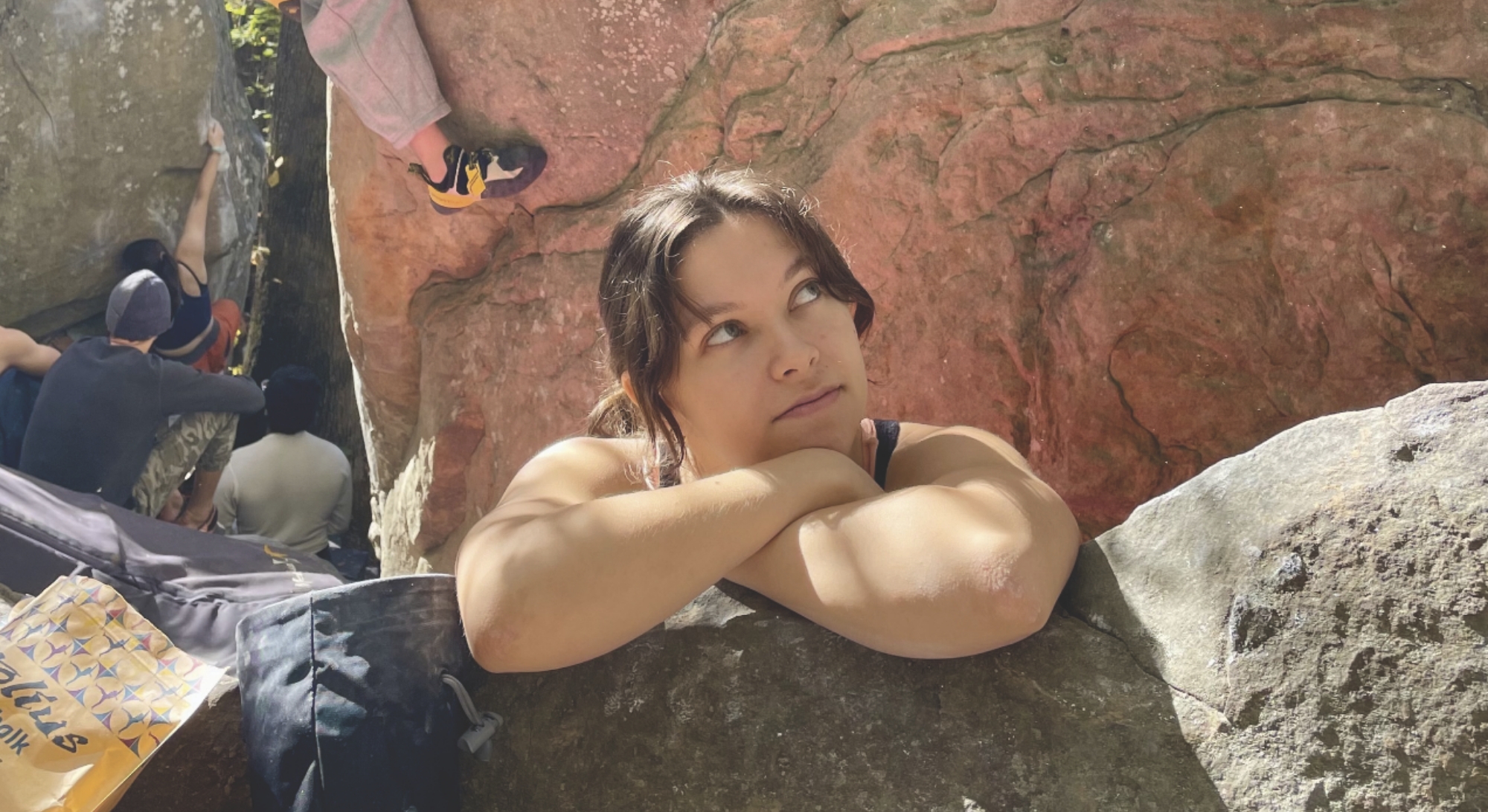
An essay.
Deep in the Shawnee National Forest, thirty minutes from the nearest gas station or hospital, is a crop of massive sandstone rocks known as the Holy Boulders. This past fall I took a road trip to the Holies with UChicago’s climbing club, UROCK, to go bouldering—a kind of rock climbing done on shorter walls without ropes or harnesses. On the drive there, I read a bit of Shakespeare for a class, and then the sun set, so I looked out the window and watched the lights go by.
What is it like to learn? It is the strained eyes from reading in the dark, yes, but it is also afflictions of the more metaphorical sort. Who among us has not been pierced by a line in a book, or been presented with a concept so difficult to grasp that thinking about it feels like turning over a heavy weight in the mind?
“It’s vertigo inducing,” my Philosophy of Language professor Ben Callard warned us about his field. My favorite classes have been ones where the divide between the mind and body is slimmed—ones where the lectures send chills down my spine, or where an assigned text is so striking, I have to stand up and take a lap about it. I’m reminded of that Emily Dickinson quote: “If I read a book [and] it makes my whole body so cold no fire can ever warm me, I know that is poetry. If I feel physically as if the top of my head were taken off, I know that is poetry.”
Climbing is an intellectual game as much as it is a physical one. “It’s like a puzzle for your body” is the cliché pitch for non-boulderers. The routes up the wall are called “problems.” A boulder problem’s moves are few but often challenging, with small or oddly shaped holds linked by a series of unintuitive contortions and reaches. One of my favorite things about climbing is how certain moves can feel impossible until a small shift—stepping up with your right foot instead of your left, dropping a knee close to the wall, gripping a different side of the same hold—makes it nearly effortless. It’s the physical equivalent of the way a single shift in syntax can turn on a light in a paper’s dim paragraph.
While bouldering at the Holies, I found myself near the end of a climb, one move from being able to pull myself on top of the rock. In indoor bouldering gyms, thick protective mats cover the floor, but in outdoor climbing, climbers have to carry in thinner, foldable cushions called crash pads. Below me, spotters stood on the crash pad’s perimeter, ready to direct a fall to safety. I knew this. But 15 feet of elevation can do a number on what you think you know. I felt a sudden upwelling of fear, an immersion in it. It was like being behind the wheel of a hydroplaning car. I heard the encouragement of the spotters below me, and felt myself breathing, and, riding the wave of fear instead of drowning in it, I found the final foothold and clambered on top of the rock.
It is a deep comfort to be able to explain why everything happens in the body. My neuroscience class no longer lets me move through the world oblivious to the physical gates and channels that open in my brain, the machinations of my body, the axons twining down each limb. My philosophy courses have given me a Rolodex of rigorous explanations for the everyday miracles of language and communication. But it is one thing to read about adrenaline and another to feel your hands still shaking 10 minutes after a hard fall. It is one thing to read in SOSC about Durkheim’s concept of “collective effervescence” and another to dance with friends and strangers, post-climbing, under warm lights strung from the trees.
Pain, joy, falling, dancing. In my philosophy discussion section, we talked about instances of these kinds of subjective experiences, or qualia. We discussed whether or not you learn something from qualia, whether there exists a class of knowledge that cannot be articulated but can only be experienced. We decided there was.
